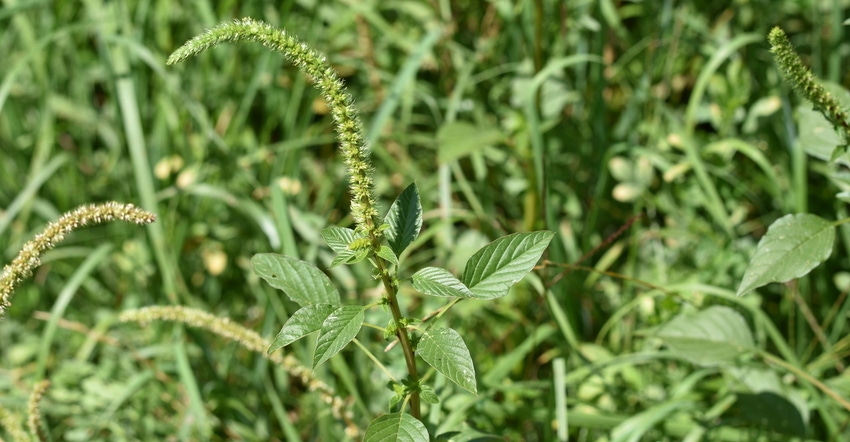July 26, 2022

As crops continue to grow and mature this season, it’s important for farmers to be aware of invasive plants in the field.
For example, Palmer amaranth is a fast-growing annual weed that is detrimental to row crops and can add higher production costs to farmers already dealing with high input costs. Palmer amaranth has developed resistance to multiple classes of herbicides and their different modes of action, making it very difficult and expensive to control.
The Minnesota Department of Agriculture considers Palmer amaranth to be a high-priority noxious weed and has been working closely with farmers, crop consultants and University of Minnesota Extension educators to eradicate new infestations when discovered. Since 2016, the MDA has identified multiple pathways in which Palmer amaranth is moving throughout Minnesota, including seed, feed, screenings and manure.
During each growing season, the MDA Noxious Weed Program receives many inquiries about plants like Palmer amaranth. Inquiries often include requests for identification, questions about how to manage weeds, and requirements expected of landowners and local governments under the Noxious Weed Law. For the MDA to respond quickly to suspected reports of species like Palmer amaranth, the MDA deployed a new Pest Case Management System in 2021 to help identify suspect plants faster.
If you were familiar with the Arrest the Pest email and voicemail, it has now been renamed Report a Pest to work with the new Pest Case Management System.
Report a Pest allows the public and MDA stakeholders to report suspected pest infestations online. It requires the user to submit information about the suspected species, location and contact information, so MDA staff can ask for follow-up information if necessary to confirm the report. If photos are provided, staff can quickly identify the species and determine if it’s a species of concern that would require further investigation. MDA staff can then create individual case actions when species of concern are documented through these reports. Any pest species can be reported, and the MDA’s quick response to Palmer infestations has been greatly enhanced by this new reporting system
How to report
If you suspect Palmer amaranth on your property, immediately visit the MDA’s Report a Pest page and enter the location of the suspected plants and your contact information into its online reporting form. If you have a phone or camera with you, take several pictures of the plant (whole plant, leaves, flowers, etc.) and upload them with your report.
Once you’ve reported through Report a Pest, an MDA staff member will review and contact you if more information is needed, or to let you know what the next steps will be. If a suspect plant is found, either flag it clearly so that it can be quickly found if the MDA decides to visit the site, or remove it from the field and save it until the species has been confirmed. Live plant material should be placed in a plastic bag and refrigerated. Dead and dry plant material should be placed in a paper bag and stored at room temperature. If the MDA suspects the plant is Palmer amaranth, it may request you send plant tissue to a lab for genetic testing to confirm identification and will send you a protocol for submitting a sample.
Visit the MDA’s Palmer Amaranth in Minnesota webpage, where you can learn more about the plant and what characteristics to look for to identify it in the field.
Source: Minnesota Department of Agriculture, which is solely responsible for the information provided and is wholly owned by the source. Informa Business Media and all of its subsidiaries are not responsible for any of the content contained in this information asset.
You May Also Like




